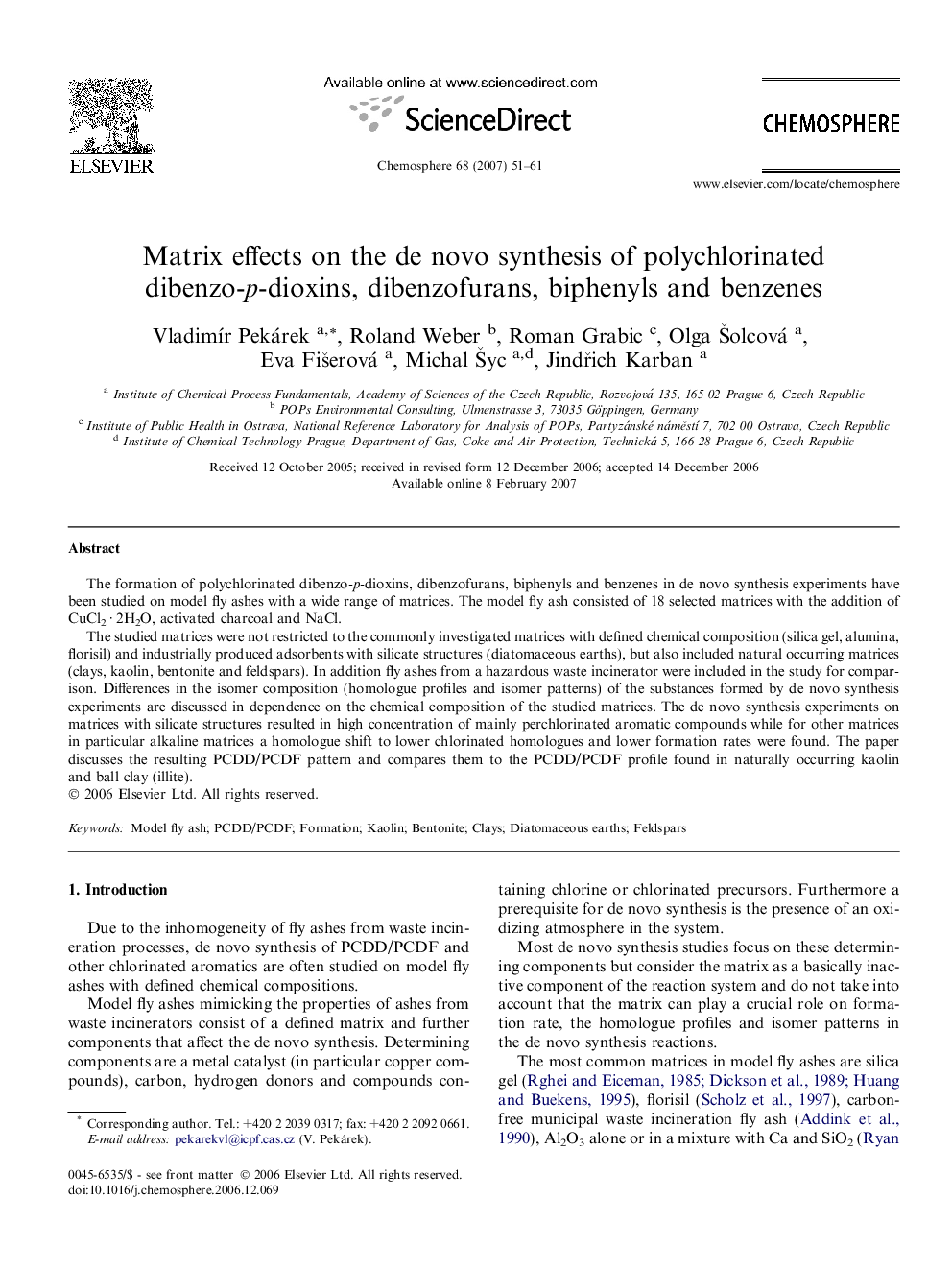| Article ID | Journal | Published Year | Pages | File Type |
|---|---|---|---|---|
| 4414811 | Chemosphere | 2007 | 11 Pages |
The formation of polychlorinated dibenzo-p-dioxins, dibenzofurans, biphenyls and benzenes in de novo synthesis experiments have been studied on model fly ashes with a wide range of matrices. The model fly ash consisted of 18 selected matrices with the addition of CuCl2 · 2H2O, activated charcoal and NaCl.The studied matrices were not restricted to the commonly investigated matrices with defined chemical composition (silica gel, alumina, florisil) and industrially produced adsorbents with silicate structures (diatomaceous earths), but also included natural occurring matrices (clays, kaolin, bentonite and feldspars). In addition fly ashes from a hazardous waste incinerator were included in the study for comparison. Differences in the isomer composition (homologue profiles and isomer patterns) of the substances formed by de novo synthesis experiments are discussed in dependence on the chemical composition of the studied matrices. The de novo synthesis experiments on matrices with silicate structures resulted in high concentration of mainly perchlorinated aromatic compounds while for other matrices in particular alkaline matrices a homologue shift to lower chlorinated homologues and lower formation rates were found. The paper discusses the resulting PCDD/PCDF pattern and compares them to the PCDD/PCDF profile found in naturally occurring kaolin and ball clay (illite).
